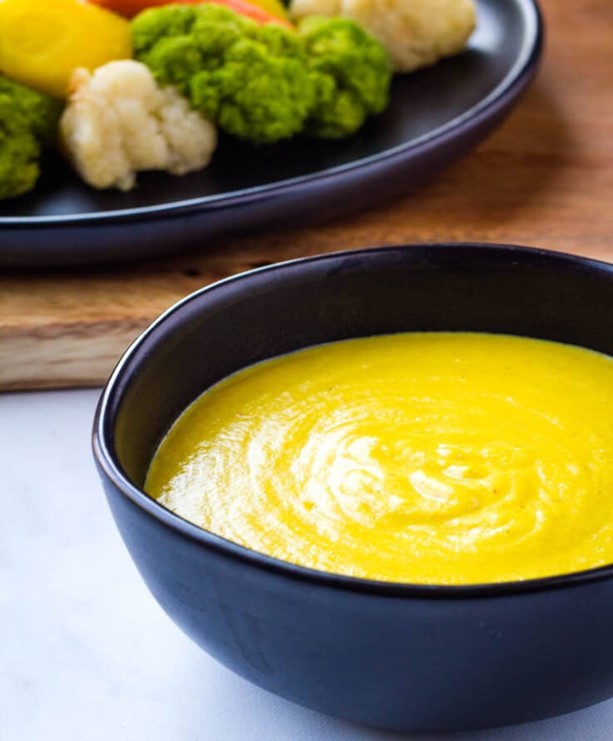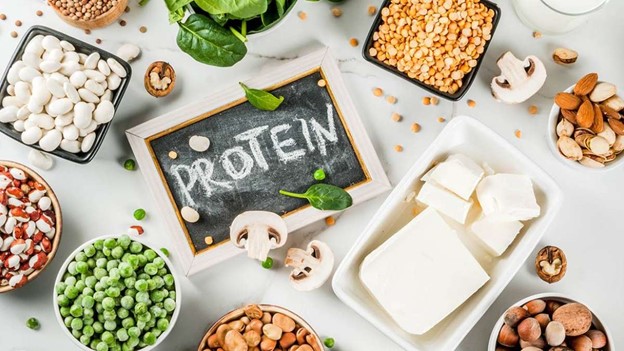Want to Eat More Plants but Family Members Don’t? Here’s Where to Go to Please Both Worlds!
Every once in awhile I find a recipe website that dazzles my socks off. When this happens, I feel a responsibility to pass on the good news. “Keeping the Peas” is just such a site. And I’m talking about it today because I get so much feedback from our readers asking for more plant-based eating information.

Alison Corey is the creator and recipe developer behind “Keeping the Peas” (www.keepingthepeas.com). She started her site in 2019 after completing a Health Coaching Certification from the Mayo Clinic. Her site is devoted to helping the plant-based eater provide delicious meals that even the non-plant-based eaters will like. Hence, you CAN keep the peace by “Keeping the peas!”
I’ve found that this site really is a reliable go-to place for healthy plant-based recipes. Every type of eater, from non-plant eater skeptics to picky kiddos, respond well to Alison’s creativity. She knows how to please both worlds.
For instance, here’s her recipe for non-dairy cheese sauce. Hard to believe a NO CHEESE cheese sauce could actually taste good, right? But she’s pretty much nailed it with this recipe. See what you think:

1 cup raw cashew nuts unsalted and not roasted
1 1/2 cups low-sodium vegetable stock
3 tablespoons nutritional yeast
1/2 teaspoon chili powder
1/4 teaspoon onion powder
1/2 teaspoon turmeric
1/4 teaspoon ground mustard
1/4 teaspoon salt
2 tablespoons fresh lemon juice
Directions:
Add Recipe to Cook'n
This site is also helpful because Alison offers not just great recipes, but some concrete guidance to starting and maintaining a plant-based lifestyle. It can be confusing. As an example, she provides a complete breakdown of what to eat when trying to eat more plant-based meals:

One of the most common misconceptions about a plant-based lifestyle is that you won’t get enough protein. While it’s true that those who are used to getting their protein from animal products will need to make a few adjustments to where they get their protein, you’ll certainly get enough protein if you eat a balanced plant-oriented diet.

The recommended amount of protein depends on your weight. According to Harvard Health, you should multiply your weight by .36 to determine how much protein you need a day. However, this number can be slightly more if you are an active person. For example, a 50-year-old woman who weighs 140 pounds, and is moderately active needs 51 grams of protein.
Still fuzzy about it? Here’s a snapshot of 51 grams of plant protein:
1 cup cooked beans = 16 grams
1 cup of cooked lentils = 18 grams
¼ cup of nuts = 7 grams
1 cup of broccoli- = 3 grams
1 cup of green peas = 8 grams
And there’s a surprising amount of protein in whole grains such as amaranth, kamut, oats, quinoa, brown rice, and seitan. You can also get protein from your favorite vegetables like broccoli (mentioned above), spinach, edamame, asparagus, artichokes, potatoes, sweet potatoes, and Brussels sprouts. So you don’t need to get all your protein from beans and lentils.

Lastly, Alison and other plant-based experts advise people who decide to move towards this lifestyle to start slowly and ease into it. Set a goal for yourself each week that’s manageable—perhaps to eat one meal a day that’s plant-based, or one meal every other day, or even just one meal a week. Decide what’s manageable for you. And remember, it’s not about perfection, it’s about starting and doing your best!

Alison Corey is the creator and recipe developer behind “Keeping the Peas” (www.keepingthepeas.com). She started her site in 2019 after completing a Health Coaching Certification from the Mayo Clinic. Her site is devoted to helping the plant-based eater provide delicious meals that even the non-plant-based eaters will like. Hence, you CAN keep the peace by “Keeping the peas!”
I’ve found that this site really is a reliable go-to place for healthy plant-based recipes. Every type of eater, from non-plant eater skeptics to picky kiddos, respond well to Alison’s creativity. She knows how to please both worlds.
For instance, here’s her recipe for non-dairy cheese sauce. Hard to believe a NO CHEESE cheese sauce could actually taste good, right? But she’s pretty much nailed it with this recipe. See what you think:

Alison's Non-Dairy Cheese Sauce
Ingredients:
1 cup raw cashew nuts unsalted and not roasted
1 1/2 cups low-sodium vegetable stock
3 tablespoons nutritional yeast
1/2 teaspoon chili powder
1/4 teaspoon onion powder
1/2 teaspoon turmeric
1/4 teaspoon ground mustard
1/4 teaspoon salt
2 tablespoons fresh lemon juice
Directions:
Bring 4 cups of water to a boil in a saucepan. Add cashews. Reduce heat to a simmer. Simmer for 10 minutes or until cashews have softened and plumped.
Drain cashews. Add drained cashews, vegetable stock, nutritional yeast, spices, and lemon juice to high-speed blender. Secure lid. Blend until smooth and creamy, starting at the lowest speed and slowly increasing to the highest speed.
Transfer to a small saucepan. Bring to a bubbling boil, whisking constantly until thickens, about 2 minutes. Remove from heat. Transfer to a serving bowl.
Drain cashews. Add drained cashews, vegetable stock, nutritional yeast, spices, and lemon juice to high-speed blender. Secure lid. Blend until smooth and creamy, starting at the lowest speed and slowly increasing to the highest speed.
Transfer to a small saucepan. Bring to a bubbling boil, whisking constantly until thickens, about 2 minutes. Remove from heat. Transfer to a serving bowl.
Recipe formatted with the Cook'n Recipe Software from DVO Enterprises.
This site is also helpful because Alison offers not just great recipes, but some concrete guidance to starting and maintaining a plant-based lifestyle. It can be confusing. As an example, she provides a complete breakdown of what to eat when trying to eat more plant-based meals:

- Fresh Produce
- Whole Grains
- Nuts and Seeds
- Non-Dairy Milk Alternatives
- Beans and Lentils
- Vegan Baked Goods (those made without eggs and dairy)
One of the most common misconceptions about a plant-based lifestyle is that you won’t get enough protein. While it’s true that those who are used to getting their protein from animal products will need to make a few adjustments to where they get their protein, you’ll certainly get enough protein if you eat a balanced plant-oriented diet.

The recommended amount of protein depends on your weight. According to Harvard Health, you should multiply your weight by .36 to determine how much protein you need a day. However, this number can be slightly more if you are an active person. For example, a 50-year-old woman who weighs 140 pounds, and is moderately active needs 51 grams of protein.
Still fuzzy about it? Here’s a snapshot of 51 grams of plant protein:
1 cup of cooked lentils = 18 grams
¼ cup of nuts = 7 grams
1 cup of broccoli- = 3 grams
1 cup of green peas = 8 grams
And there’s a surprising amount of protein in whole grains such as amaranth, kamut, oats, quinoa, brown rice, and seitan. You can also get protein from your favorite vegetables like broccoli (mentioned above), spinach, edamame, asparagus, artichokes, potatoes, sweet potatoes, and Brussels sprouts. So you don’t need to get all your protein from beans and lentils.

Lastly, Alison and other plant-based experts advise people who decide to move towards this lifestyle to start slowly and ease into it. Set a goal for yourself each week that’s manageable—perhaps to eat one meal a day that’s plant-based, or one meal every other day, or even just one meal a week. Decide what’s manageable for you. And remember, it’s not about perfection, it’s about starting and doing your best!
 Alice Osborne
Alice Osborne
Weekly Newsletter Contributor since 2006
Email the author! alice@dvo.com
